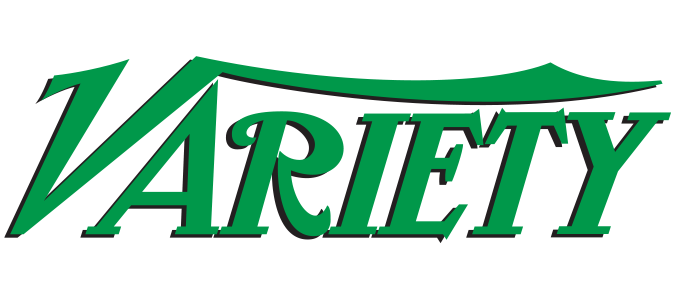In these Wild West days of the Internet, it seems that everyone involved in Web video is hoping to discover the magic bullet that will bring forth a sustainable business — whether that means carefully loading the gun as a content provider or simply bringing in a big enough posse as a content aggregator, or something in between.
While studio and TV execs are eyeing digital distribution of their own product as a potential replacement for revenues threatened by declining coin from home entertainment and syndication, smaller entrepreneurs are betting that original scripted content for the Web can make it to the big time.
Web video has been around for more than a decade, but its importance is growing as the industry seeks new revenues in a radically changing landscape. Improved technology for streaming and downloading, combined with the prolonged economic downturn, has led some consumers to cut the cable and move all content to their computer screens. A somewhat shocking report from SNL Kagan found that U.S. cable operators lost 741,000 video customers in the third quarter of this year — a number not offset by customer gains among satellite and telco providers (Daily Variety, Nov. 18).
But when it comes to Web video, cord cutting can, ahem, cut both ways: Consumers who get all their video via the Internet have equal access to original Web-only fare, to TV content pumped out over the Web by services such as Hulu, and for a fee, to films from Netflix. So among this group, it’s unclear if short-form Web shows will be hurt by competition from big-budget TV programs and movies, or whether the tide will eventually raise all boats on the same platform.
The truth is, no one knows. Of the hundreds of companies offering original online content and experimenting with various ways to monetize it, only a small handful have managed to raise enough money to expand their efforts — including Vuguru, Funny or Die and My Damn Channel. Each has added its own distinct touches in the move to find the fiscal solution.
Vuguru, launched in late 2006 by Michael Eisner, started out producing Web series like “Prom Queen,” which consisted of about 80 youth-oriented 90-second shorts. It followed this up with scripted mockumentary “The All-for-Nots,” sports comedy “Back on Topps” and others.
In October, 2009, Vuguru announced an output deal with Canada’s Rogers Media, giving Rogers exclusive Canadian rights to Vuguru product. “They license from us everything we produce and put it out on their platforms,” says Vuguru prexy Larry Tanz. Vuguru says the funding is helping it reach its goal of producing 30 Web series a year.
A second boost came in September when Vuguru signed a first-look deal with ContentFilm distrib unit Fireworks Intl. The pact’s first fruit is the sale of Vuguru Web series “The Booth at the End” to Fox International Channel in all territories outside North America.
Another site, My Damn Channel — which launched in 2007 and raised $4.4 million in private equity last August — produces a significant amount of original work, including “You Suck at Photoshop,” “Wainy Days” and other widely viewed web series. The company is behind “Easy to Assemble,” an Ikea-branded show starring Illeana Douglas, who started the project with funding from the furniture purveyor.
“We’re building a brand by chasing the best original content we can, serving as a distribution company for work that others have produced,” says topper Rob Barnett.
Will Ferrell’s and Adam McKay’s Funny or Die launched in 2007 with “The Landlord,” a short in which Ferrell confronts a beer-swilling 2-year-old (played by McKay’s daughter). FOD has attracted exclusive material from established players like Judd Apatow and, like Vuguru, has added credence to the Web as a launchpad for content that can migrate to mainstream media.
In June, HBO bought a small piece of the Web programmer for a reported $10 million and added a half-hour series, “Funny or Die Presents,” to its sked.
“We just finished production on a second season that will air starting in February,” says FOD topper Dick Glover. “HBO pays us a fee to produce the shows; they own them and we get certain online rights.”
And in October, FOD received a pilot order from TBS for “Undercover Karaoke,” a potential reality series based on the video “Undercover Karaoke with Jewel,” which went viral after premiering online in August. Funny or Die will produce; the video’s creator Eric Appel, FOD co-founder Chris Henchy and production prexy Mike Farah will exec-produce. FOD creative director Andrew Steele, Ferrell and McKay will all have credits.
Another Funny or Die Web show, “Jon Benjamin Has a Van,” received a 10-episode order from Comedy Central in July.
“These are all pretty standard deals,” says Glover.
On the TBS deal, FOD is the production company as well as the presenting company, producing “for a license fee and standard terms,” Glover adds, “although there are peculiarities on the online side so we can continue to exploit it once it’s run its TV window.”
It remains to be seen whether many of these Web shows can make it on TV.
But for every online content endeavor that manages to sign deals and keep going, there are several that fail.
Past missteps include “Quarterlife,” a 36-part Web series focused on the lives of twentysomething artists produced by Ed Zwick and Marshall Herskovitz. NBC acquired TV rights and preemed a stitched-together episode in February, 2008, but it performed so poorly it was yanked after airing only once.
And some may wonder whatever happened to online phenom “LonelyGirl15,” which ran from 2006 to 2008. That Web series and its spinoffs never crossed over to other media, and their producer, Eqal, has shifted its emphasis from content creation to Web technology.
Among Web-to-TV success stories, one of the most notable is the animated “South Park,” although few now remember its online origins as a viral video back in the early ’90s. “South Park” debuted on Comedy Central in 1997 and has been going strong ever since.
In a twist, Warner Bros.’ homevid unit Warner Premiere announced in September that it is creating two live-action Web series for direct online distribution. The first — 48 three-minute episodes produced by Bryan Singer — is called “H+.” The other, “Aim High,” consists of six 10-minute episodes produced by McG.
The content can be “sliced and diced any which way” and stitched together for TV and VOD, says Eva Davis, Warner Premiere exec veep. The initiative is designed to maximize revenue from all distribution windows and — eventually — to help make up for shrinking revenues from the packaged media sector.
Today’s Web content initiatives represent the second wave of attempts to provide online video. The first came in the bubble days of the late ’90s when a host of startups began to offer content online, which they believed to be the next big thing. Companies like Digital Entertainment Network and Pseudo.com loaded up on go-go capital, produced original content, pumped out jerky, grainy images — and partied like there was no tomorrow.
But tomorrow arrived with a vengeance. The dot-com bust forced many of the early players to shut down, while some were swallowed up by other companies.
Then, riding on the back of a broadband universe reaching critical mass, the second wave arrived, offering better quality. Propagated by YouTube and others, user-generated content became the rage, while sites like Hulu, Netflix and those of the major networks served up mainstream TV shows and films via streaming or downloads.
Original, scripted content produced mainly for the Web fills the gap between these two extremes — although when it becomes successful it tends to migrate to more mainstream media, which still pay the big bucks. In that sense, the Web can be seen as a proving ground for material that sometimes crosses over to traditional TV.
Sensing an emerging industry, two orgs — the Webby Awards and the Streamy Awards — now bestow kudos for original Web content. The Webbys date back to 1996 and also honor such categories as live events and animation. The Streamys, launched in 2008, focus specifically on serialized entertainment content.
Awards and TV crossover aside, the question still remains as to whether online video can be a profitable business purely on the Web. Because most entertainment content sites are privately held, financials are hard to come by. “They’re making money because CPM’s for online video are high,” says Nielsen senior veep Jon Gibs, “but I’m not sure of any of them are making a profit.” Their biggest challenge, he adds, is to aggregate a significant audience.
“In traditional media, you have distribution windows and you monetize your content across multiple platforms and many time periods,” says Joe Michaels, senior director of business development at Microsoft. “On the Web we haven’t developed those systems yet. If you think you’re simply going to launch a popular viral video and make a lot of money, you’re going to learn how tough that is.”
“There’s not a lot of money yet in original content for the Web,” says Arash Amel of research firm Screen Digest, which just released a study analyzing the market. He sees three models for generating revenue: electronic sell-through, or download; subscription services; and advertising-supported.
Fun Little Movies, which claims to be the first online comedy video channel, is one company that derives income from a dual stream of subscriptions and branded entertainment, a subset within the advertising model.
Since 2004, the company has been supplying material to Sprint’s mobile network, with the carrier charging customers $4.95 a month for the channel. Company founder Frank Chindamo, who says Sprint won’t let him disclose subscriber numbers, has also branched out into what he calls “advertainment,” One example: “Bea Wildered,” a Web series of ecology-themed animated shorts commissioned by Discovery Communications’ Planet Green.
“The (return on investment) in TV commercials is going down,” Chindamo says, and marketers are increasingly looking to “embed the message of the brand within the body of the entertainment, yet still provide entertaining content. It’s really hard to do it well.”
Still, many hold out hope for a pure Web-only ad-supported model. “A website doesn’t exist to be an incubator of product,” says Glover. “It exists to be a place where you can get funny shortform videos and be amused. If it becomes a TV pilot or show, so much the better.”
But the distinction between Web and TV will become less clear if cord-cutting continues to spread. “I haven’t owned a TV since 2007,” says Kathleen Grace, head of programming at Next New Networks, which produces and distributes original Web series. “I use a big monitor and connect my laptop with Hulu, Boxee, iTunes, and digital antenna to get my TV and movies. I’m slowly becoming not the exception, but the rule.”



